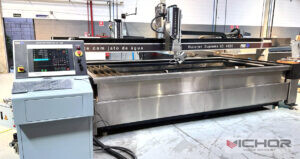
Water Jet Speed: The Unseen Engine of Modern Industrial Precision
When you think of cutting-edge technology, what comes to mind? Perhaps lasers, robotics, or AI-driven systems. But there’s a powerhouse hiding in plain sight: water jet speed. This often-overlooked aspect of high-pressure water systems is revolutionizing industries by enabling precise cuts, efficient cleaning, and sustainable operations. From manufacturing floors to environmental cleanup sites, the velocity of water jets plays a critical role in achieving unmatched accuracy and productivity. In this article, we’ll dive deep into the world of water jet speed, uncovering its fundamentals, influencing factors, real-world applications, measurement techniques, and future innovations. Whether you’re an engineer, a hobbyist, or simply curious, understanding water jet speed can open doors to smarter, more efficient processes. Let’s explore how this dynamic force is shaping the future.
What Is Water Jet Speed and Why It Matters
Water jet speed refers to the velocity at which water is expelled from a nozzle in high-pressure systems, typically measured in meters per second (m/s) or feet per second (ft/s). This isn’t your everyday garden hose flow; we’re talking about speeds that can exceed 900 m/s, capable of slicing through metals, composites, and even stone with precision. The importance of water jet speed lies in its direct impact on efficiency and quality. For instance, in industrial cutting, a higher water jet speed translates to faster processing times and cleaner edges, reducing material waste and energy consumption. Moreover, water jet speed is a key parameter in applications like surface cleaning and mining, where it determines the effectiveness of material removal without heat-affected zones. By mastering water jet speed, industries can achieve finer tolerances, lower operational costs, and enhanced safety, making it a cornerstone of modern engineering. Understanding this concept helps in optimizing systems for peak performance, ensuring that every project benefits from the relentless force of high-velocity water.
Factors Influencing Water Jet Speed
Several elements come into play when determining water jet speed, and grasping these can help in fine-tuning systems for optimal results. First and foremost, pressure is a primary driver. Higher pump pressures, often reaching up to 60,000 psi or more, accelerate water to incredible speeds by converting hydraulic energy into kinetic energy. Nozzle design is another critical factor; a well-engineered nozzle with a precise orifice size minimizes turbulence and maximizes velocity, ensuring a focused stream. Additionally, water quality affects water jet speed—impurities or air bubbles can disrupt flow and reduce efficiency. The type of abrasive material used in mixed jets (where abrasives like garnet are added) also influences speed by altering the jet’s density and cutting ability. Environmental conditions, such as temperature and altitude, can subtly impact performance, as they affect water viscosity and pressure stability. By controlling these variables, operators can maintain consistent water jet speed, leading to reliable outcomes in demanding applications like aerospace component manufacturing or architectural stone cutting.

Applications of High-Speed Water Jets
The versatility of water jet speed shines across diverse industries, each leveraging its unique advantages. In manufacturing, high water jet speed enables precise cutting of materials like titanium, glass, and plastics without generating heat, preserving material integrity and reducing the risk of deformation. The automotive sector relies on it for shaping parts with intricate designs, where speed ensures quick turnaround and minimal waste. In the construction field, water jet speed is pivotal for demolishing concrete or cleaning surfaces, as its force can remove stubborn deposits without damaging underlying structures. Environmental applications include soil remediation and oil spill cleanup, where controlled water jet speed helps dislodge contaminants efficiently. Even in the food industry, high-speed water jets are used for cutting products like fruits and pastries, maintaining hygiene and precision. By adapting water jet speed to specific needs, these sectors achieve higher productivity and sustainability, proving that this technology is far more than a niche tool—it’s a game-changer in global innovation.
Measuring and Optimizing Water Jet Speed
Accurately measuring water jet speed is essential for maintaining quality and efficiency in various operations. Common techniques involve using laser Doppler velocimetry or high-speed cameras to capture the jet’s movement in real-time, providing data on velocity profiles and potential inconsistencies. Pressure sensors and flow meters integrated into the system also help infer water jet speed by correlating it with pump output and nozzle characteristics. Once measured, optimization strategies come into play. Regular maintenance of pumps and nozzles prevents wear that could slow down the jet, while using filtered water reduces clogging and maintains peak water jet speed. Adjusting pressure settings based on material hardness can fine-tune performance; for example, softer materials might require lower speeds to avoid over-penetration. Advanced control systems with feedback loops enable dynamic adjustments, ensuring that water jet speed remains stable even under varying loads. By prioritizing precise measurement and proactive optimization, businesses can extend equipment lifespan, reduce downtime, and achieve superior results in applications like precision machining or underwater cutting.
The Future of Water Jet Speed Technology
As technology evolves, so does the potential of water jet speed, with emerging trends pointing toward smarter, more sustainable solutions. Innovations in pump design aim to achieve even higher pressures and efficiencies, potentially pushing water jet speed beyond current limits for faster processing in industries like shipbuilding and renewable energy. The integration of artificial intelligence and IoT sensors allows for real-time monitoring and adaptive control of water jet speed, minimizing human error and enhancing precision. Environmental considerations are driving the development of water-saving systems that recycle water and reduce consumption, all while maintaining high velocities. Research into hybrid jets combining water with other mediums could unlock new applications in medical device manufacturing or space exploration. Moreover, as global demand for eco-friendly practices grows, water jet speed technology is set to play a pivotal role in reducing carbon footprints by replacing traditional, energy-intensive methods. By staying ahead of these trends, industries can harness the full power of water jet speed to tackle future challenges, from climate change to advanced material sciences.
Frequently Asked Questions
Q1: What is the average range of water jet speed in industrial applications?
A1: In industrial settings, water jet speed typically ranges from 600 to 900 meters per second, depending on factors like pressure and nozzle design. This high velocity allows for efficient cutting and cleaning across various materials.
Q2: How does water jet speed impact the quality of cuts in manufacturing?
A2: A higher water jet speed generally results in smoother, more precise cuts with reduced kerf width and minimal material distortion. It enhances accuracy by maintaining a consistent stream, which is crucial for intricate designs and high-tolerance parts.
Q3: Can water jet speed be adjusted for different materials?
A3: Yes, water jet speed can be fine-tuned by altering pressure settings, nozzle size, or adding abrasives. For softer materials, lower speeds may be used to prevent damage, while harder substances require higher velocities for effective processing.
Q4: What safety precautions are necessary when working with high water jet speeds?
A4: Safety measures include wearing protective gear, ensuring proper equipment maintenance, and implementing emergency shut-off systems. High water jet speeds can cause serious injuries, so training and adherence to protocols are essential to prevent accidents.
Q5: How is water jet speed measured in real-world scenarios?
A5: Techniques like laser-based velocimetry or high-speed imaging are commonly used to measure water jet speed directly. Alternatively, indirect methods involve calculating speed from pressure and flow data using established formulas and sensors.
continue reading
Related Posts
- 1352 words6.8 min read
- 1378 words6.9 min read


